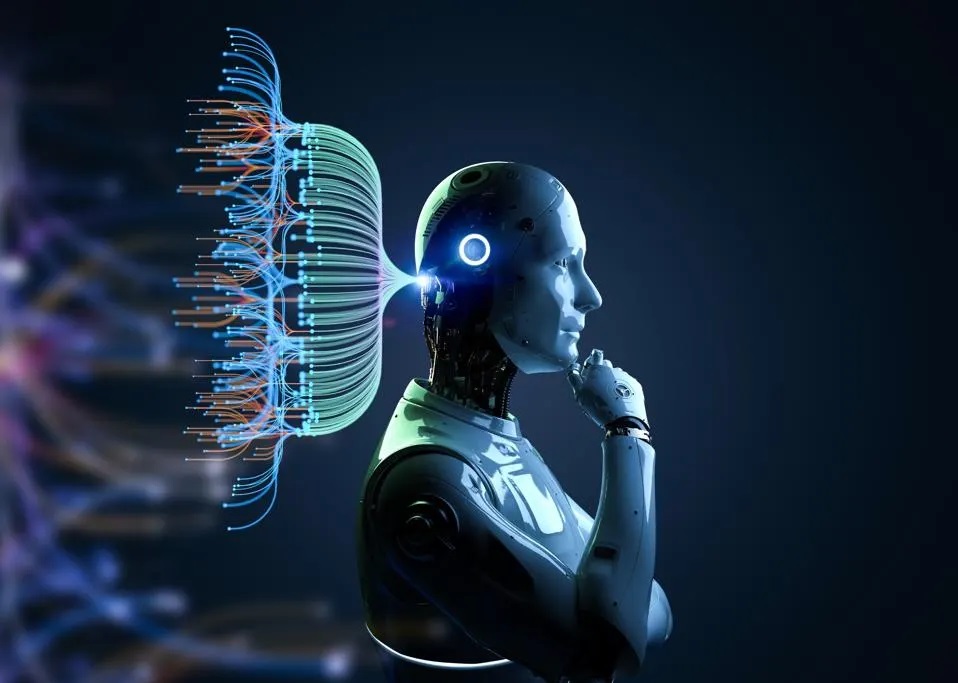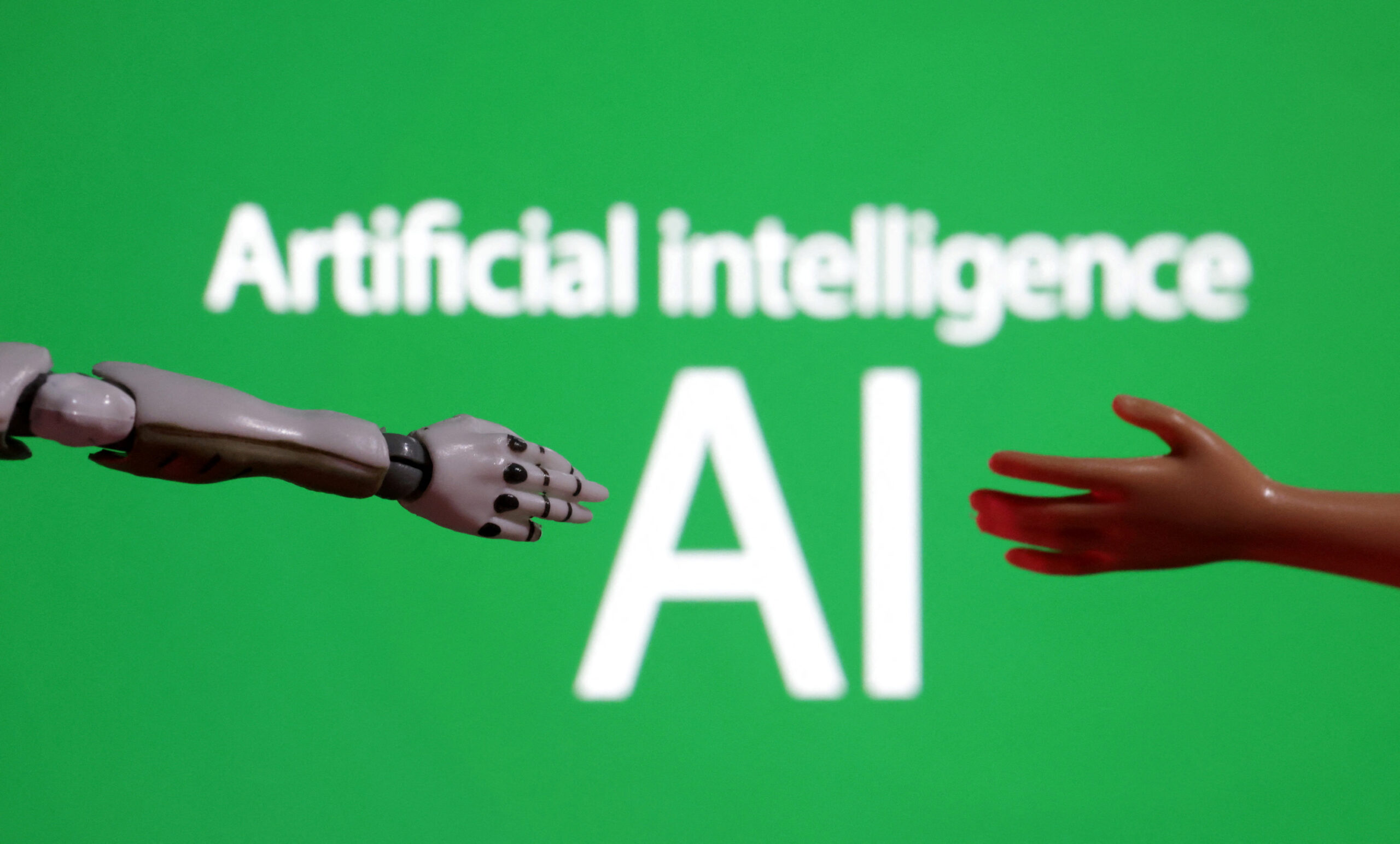
Decoding Artificial Intelligence (AI): Types, Pros, Cons, & Applications
Artificial Intelligence (AI) technology has found its way into every aspect of our daily lives. You will see its applications in banking, healthcare, transport, and personal gadgets to name a few. You might have come across OpenAI’s ChatGPT and text-to-image DALL-E, the two popular applications of AI. However, this topic is much more than you can comprehend.
In this blog, we will take you on a journey to discover the world of AI, how it works, and how it is impacting our daily lives every day. Let’s jump right in.
What is Artificial Intelligence (AI)?

The first question many people would ask is: What is AI? Understanding the basics of AI and how it works isn’t rocket science anymore thanks to the multitude of information available on the internet.
In a simplified manner, artificial intelligence are computer system that is designed to simulate human intelligence. In a nutshell, AI systems perceive their environment, process what they have perceived, recognize speech, identify patterns in data, and make decisions that were earlier possible by humans only.
Depending upon the use case of the AI systems, they can be trained on various AI algorithms which are sets of instructions and processes that we as humans follow regularly. They learn from a trove of data available at their disposal to make decisions accordingly. AI systems can be programmed to execute tasks ranging anywhere from the simplest to the most complex ones out there.
AI systems can be supervised when they are trained on labeled data and the system has an idea of what the output could be. On the other hand, a non-supervised AI system scours through unlabeled data using models fed to it and will analyze patterns to find ways to make sense of the data. That’s all without seeking any human assistance. For instance, if a non-supervised AI system plays a game, the system will figure out the rules, how it can win the game, and beyond by continuously playing the game until it does.
Albeit there’s a bright side to AI, there’s also skepticism around it, especially with what we have been fed by movie makers that show how AI could potentially take over the world, however, it is far from reality.
Some researchers believe AI systems could soon exceed human capability to learn or reason although there’s a long way to go. Humans usually take various factors into account when rationalizing their decisions that AI will find difficult as of now. The most common is the dilemma of choosing either to hit a pedestrian crossing the road abruptly or pumping the brakes to stall and stop the car that could potentially flip it or steer it out of control putting the passenger’s life in danger.
Types of AI

Types of AI
AI can be categorized into various types based on functions and capabilities. Almost every AI application that you see today is a part of ‘Weak AI‘. These systems are designed to do specialized tasks, and perhaps more successfully than humans. These are also known as ‘Narrow AI’, an apt term since a weak AI may excel in a specific task, however, it lacks capability or functionality when put up with tasks outside its domain. Reactive and Limited Memory are two kinds of AI systems that fall under the umbrella term of ‘Weak AI’.
Next, ‘Strong AI‘ or General AI is considered the most advanced form of AI popularized by sci-fi movies. It is a system that can learn, understand, and solve problems in multiple domains and perform any intellectual task that humans can. These are also known as artificial general intelligence attaining which, the AI will be capable of exceeding human intelligence, however, it is currently a far-off reality. This type of AI doesn’t exist at the moment.
A ‘Superintelligent AI‘ is categorized as a system that can innovate, make discoveries, and process data at an unprecedented rate escaping the boundaries of what humans can do cognitively. It is a hypothetical form of AI that doesn’t exist at the time of writing this. Finally, we have ‘Self Aware AI‘ which as the name suggests, is self-aware and in control of its emotions, thoughts, and above all, existence. It has a consciousness akin to humans.
How Does AI Work?

Artificial Intelligence (AI) systems use algorithms, labeled or unlabeled data, and computational power to imitate human intelligence without requiring a human to do the heavy lifting.
Here’s a simplified answer on how AI works on a macro level.
Firstly, an AI system requires a lot of data collected from various sources including the internet, databases, sensors, and others. Secondly, data is prepared for next steps by cleaning and generalizing it. This step is critical to ensure all the data is in the correct format, there’s no missing value among others.
Next up, you need to choose an appropriate algorithm based on the use case and outcomes using which, the AI system will train itself as it gets better. The system takes in data, identifies patterns, and makes decisions based on the data set. It is also true that AI systems rely on feedback loops and use them to perform iterative improvements by fine-tuning the parameters of the algorithm and improving overall insights and predictions from the dataset.
The outcome of the data depends upon various factors including the quality and quantity of data as well as the chosen algorithms.
Pros and Cons of AI

AI has the potential to transform how we see the world and how it could impact our daily lives. But as with any other technology, AI has its fair share of pros and cons. Let’s take a look at both sides of the coin.
Pros
Using AI to accomplish repeatable tasks helps achieve both accuracy and consistency. For instance, a car manufacturing plant could leverage AI to mold components for an engine and repeat the process over and over again. At the end of the week or month, the plant will have hundreds and thousands of molds that will be practically identical to each other.
AI improves decision-making capabilities. It can help reduce operational costs by enhancing the efficiency of machines in use. AI can detect patterns that have been triggering backlogs or delays in a process and fine-tune them to achieve better efficiency and faster turnaround time.
Generative AI has become a huge thing in today’s time as it lets users generate new content out of thin air although a lot is going under the hood. Gen AIs such as ChatGPT and DALL-E can generate multimedia including text, images, videos, PDFs, and beyond based on user prompts or instructions with ease.
Cons
Just as we have pros, there are potential downsides or cons of using AI as well. For instance, automation has already taken over the jobs of hundreds of thousands of people around the globe. If the trend continues, millions will be left unemployed in the coming years. Statistics suggest around 800 million people could go unemployed by 2030 once AI assumes its potential in the coming years.
AI has been criticized in events of critical decision-making such as in the case of autonomous driving where it might not be able to make rational decisions, possibly hitting a pedestrian, the other car or risk the lives of passengers inside. There have been instances of biases that AI could potentially create such as towards people of specific color or race.
Finally, there’s also skepticism over how AI systems make their decisions in certain situations that could result in less-than-optimal resolution.
Artificial Intelligence Applications

Let’s take some of the common real-world AI applications that impact our lives regularly.
AI for Speech Recognition
Siri and Google Assistant are AI chatbots capable of recognizing user’s verbal instructions. These systems use natural language processing (NLP) to process human speech, convert it into a written format and take actions accordingly. It is also known as computer speech recognition.
AI in Supply Chain
Over the recent years, the supply chain industry has transformed into more complex architecture consisting of various players and assets. As the technology advanced, we have seen infusion of IoT devices, NLP tools, and AI into the supply chain accounting for countless use cases. For instance, predictive analytics, inventory management, network optimization for cargo ships, to preventative maintenance are a few examples where AI has made its presence.
AI along with digital twin can now create a virtual map of a shipping port, account for all the activities using IoT and other sensors in real-time and perform predictive analysis on capabilities of the ports and the ships docked at the berths. It can help mitigate the issue of excessive fuel charges using route optimizations that can consider internal as well as external stimuli to analyze ideal route from point A to B with the lowest possible fuel and energy expenditure.
AI in Healthcare
Healthcare has been a buzzing field of interest for researchers, especially given the prowess AI has to offer. For instance, it can help streamline patient care, reduce diagnosis and monitoring time, as well as help doctors, and healthcare professionals perform complicated tasks such as imaging at certain angles that might pose a problem for humans.
AI systems are being actively trained to analyze X-rays and other scans to find contagious and other diseases. It will take away the excess pressure radiologists face when screening hundreds of patients daily. AI systems including surgeon robots have taken over certain complicated procedures requiring millimeter precision such as removing infected tissues during a kneecap replacement surgery.
The possibilities are countless – virtual health assistants, drug discovery and development, personalized medicines based on genetic information, lifestyle factors, medical history and responses to previous treatments, etc.
AI in Cybersecurity
Cybersecurity is another area where AI systems have kept their stronghold. AI systems can be trained to analyze vast datasets to identify patterns signaling any malicious activities. As AI has an upper hand in recognizing patterns among a trove of data that might not be perceivable by humans, it can also help police authorities identify the malicious exchange of money such as in the events of money laundering.
Behavioral analysis using AI can indicate potential security breaches that hackers and attackers could exploit to cause organizations loss of money or reputation or both. Other applications include malware detection, and routine cybersecurity tasks, among others that we will discuss in length on RASOC soon.
AI in Banking and Finance
AI has found its applications across banking and finance sector which is essentially the backbone of any country. Right from reducing operational costs to lowering human errors to averting loan defaults, AI is now being used extensively for the betterment of the society. You can read about AI in banking and finance in-depth in this blog.
Some Common Uses
There are countless common uses of AI in everyday life that we go through without thinking twice. For instance, Google has been crunching searches and troves of data to find relevant search results. There’s AI at work that learns users’ online behavior and potentially influences one’s buying decisions when seeing an ad or visiting an e-commerce platform.
Self-driving cars have boomed over the years availing various levels of autonomy including features such as lane-changing assist to becoming fully autonomous self-driving in a few years. Car makers are developing AI technologies taking inputs from sensors and cameras such as in the case of computer vision to detect possible pedestrians or other situations that need to be averted.
Many translation applications employ AI to transform speech to text or vice versa as well as translate languages such as using Google Lens in real time.
Wrapping Up!
AI may seem like a new-age technology; however, it has been around for more than half a century. Thanks to the enormous amount of data, robust algorithms, and computational power that we have today, AI has made its presence felt across every aspect of our life and beyond.
We are still coursing through AI advancements that means we will get to see its prowess increase manifold over the years as more and more people are putting their trust in AI technologies.
With that, we conclude our take on decoding AI and how it works along with some of the applications sprinkled on top. Of course, AI is a vast subject that we will touch soon in our next take.
About RA Technology
RA Technologies (RASOC) is a leading managed security solutions provider in the UAE. Our mission is to bolster your businesses with robust cybersecurity measures by fortifying the critical systems, the data, and the people from any digital threats. We have extensive experience in end-to-end cybersecurity solutions including VAPT, EDR, SIEM, SOAR, MDR, and Digital Forensics.
With a proven track record, incredible response time, and excellent customer service, we have consistently outranked many competitors in protecting organizations against threats that would’ve otherwise caused widespread distrust, loss of reputation, and financial implications to a greater degree.
Need custom-made managed security solutions for your organization? Look no further as RASOC has it all set up under one roof offering you complete peace of mind while our experts will take care of your cybersecurity measures.
For more information, call +971 4 210 1900 to connect with an expert to get personalized advice and action plans.





 July 31, 2024
July 31, 2024


